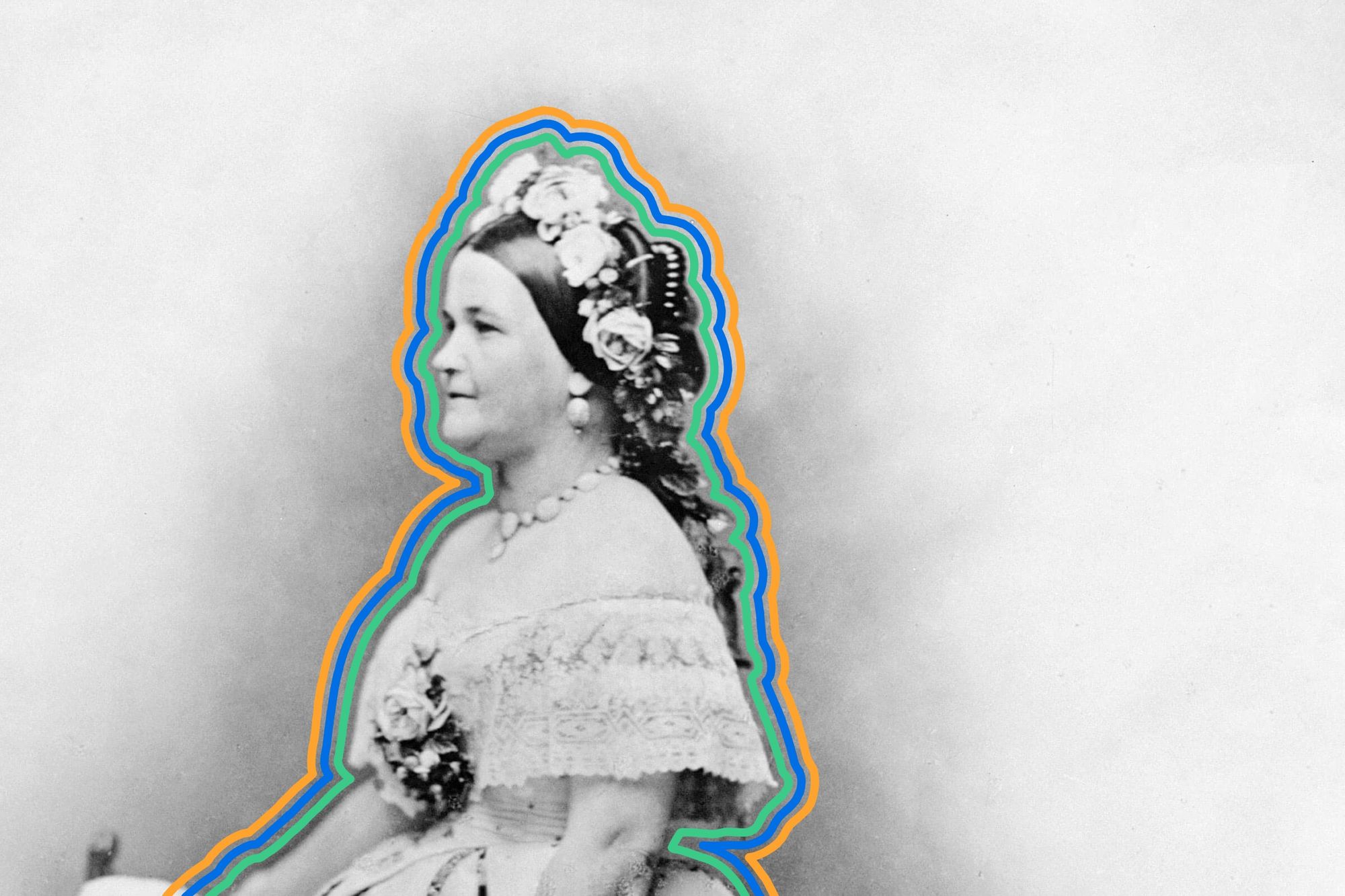

The wife of the 16th and perhaps most consequential President in U.S. history, Mary Todd Lincoln left behind an intriguing legacy in her own right. Often remembered as a troubled foil to her saintly husband, she was of course a far more complex person than the shrewish caricature she was often reduced to, especially when considering the enormous losses she suffered in her lifetime. Read on to learn seven facts about this outspoken and misunderstood First Lady.
Mary Todd Was Well Educated for a Woman of Her Time

Mary was one of 16 children born to Kentucky businessman and politician Robert Smith Todd, who possessed the financial means and progressive mindset to make sure his daughters were academically engaged. She subsequently studied a wide range of subjects over five years at Shelby Female Academy, before spending another four years perfecting her French at the Mentelle’s for Young Ladies boarding academy. Her schooling, combined with exposure to influential family friends such as Senator Henry Clay, ensured that Mary was well versed in both classical subjects and contemporary issues.
Stephen Douglas Asked for Mary’s Hand in Marriage

While Abraham Lincoln and Stephen Douglas famously sparred in a series of debates for a U.S. Senate seat in 1858, they also competed for the affections of the same fiery Kentucky woman some 20 years earlier. After moving to Springfield, Illinois, in the late 1830s, Mary drew the attention of promising suitors like Douglas, then a rising lawyer and politician. However, the ambition and charisma of the "Little Giant" wasn't enough to win her over; when Douglas asked for her hand in marriage, she reportedly replied, "I can't consent to be your wife. I shall become Mrs. President, or I am the victim of false prophets, but it will not be as Mrs. Douglas."
Mary Formed a Strong Political Partnership With Her Husband …

Historians have often mused over what drew Mr. and Mrs. Lincoln to matrimony in November 1842 — she was short, tempestuous, and sophisticated; he was towering, shy, and dirt-poor — but their seemingly contradicting attributes masked a strong partnership. Politically, they saw eye-to-eye with their roots in the Whig Party, and he valued her intelligence and judgment of character. Furthermore, Mary's refinement proved an asset on the 1860 presidential campaign trail, helping to convince journalists that the little-known Republican was a serious candidate. Her invaluable contributions to the campaign prompted Lincoln, upon learning of his victory, to exclaim to his wife: "Mary, Mary, we are elected!"
… But She Was an Unpopular First Lady

Any public benefits Mary provided for Lincoln during his candidacy quickly evaporated by the time she settled into her role as First Lady. She was criticized for burning through the allocated congressional funding for White House renovation during one extended shopping trip, and again for hosting parties during a solemn time of war. Mary also butted heads with White House staffers — Lincoln's secretary John Hay called her a "hellcat" — and did herself no favors with the occasional public tantrum. Although she also visited wounded soldiers and contributed to a fund for runaway enslaved people, such deeds were usually eclipsed by the waves of negative publicity.
Mary Todd Lincoln Was Close Friends With a Formerly Enslaved Woman Turned Dressmaker

Born into slavery in Virginia, Elizabeth Keckley (also spelled Keckly) used her sewing talents to become a dressmaker to some of the most powerful women in the nation’s capital, including the incoming First Lady in 1861. Their relationship quickly progressed from professional to personal, with one observer describing the seamstress as "the only person in Washington who could get along with Mrs. Lincoln." The widow pleaded with Keckley to move with her to Chicago after leaving the White House, and she later enlisted her confidant's help in an ill-fated attempt to sell off personal possessions. However, their relationship came to an end after Keckley revealed too many private details in her 1868 memoir, Behind the Scenes: Or, Thirty Years a Slave, and Four Years in the White House.
Mary Todd Lincoln Was Committed to a Mental Institution by Her Surviving Son

As a mother who'd lost three sons to various diseases — and her husband to an assassin — Mary was understandably troubled after she had a premonition of misfortune befalling her lone surviving son, Robert, fueling a confrontation between the two in 1875. Agitated by years of Mary’s increasingly erratic behavior, Robert took her to court for insanity proceedings, and personally testified to her "unsound mind" to get her committed to Bellevue Place Sanitarium in Batavia, Illinois. Whatever distress she was enduring at the time, Mary was shrewd enough to behave under close watch while smuggling letters to influential allies, who managed to secure her release to her eldest sister's care after a few months.
Mary Todd Lincoln May Have Suffered From a Vitamin B12 Deficiency

Mary's list of physical and mental issues has long been a source of fascination for armchair psychologists and real-life physicians. Some have posthumously diagnosed her with illnesses ranging from Lyme disease to diabetes, but in 2016, one doctor put forth an intriguing theory that she may have suffered from a condition called pernicious anemia. Often brought about by the body's inability to absorb vitamin B12, pernicious anemia can lead to such symptoms as headaches, fever, swelling, mouth soreness, and shortness of breath — all of which were experienced by the First Lady. Had she enjoyed access to the B12 shots that became available after WWII, she may have had a somewhat easier time in her later years and been remembered differently by history.
